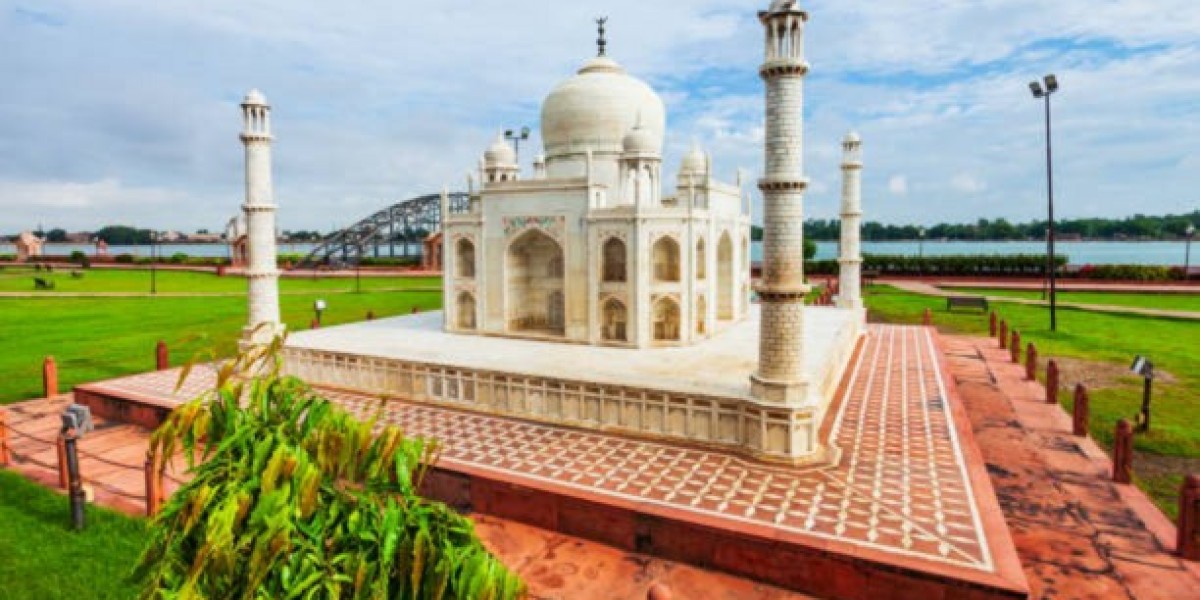Taj Mahal: The Crown Jewel of India’s Architecture
The Taj Mahal is an iconic symbol of love and one of the most visited tourist destinations in the world. This magnificent structure is considered one of the Seven Wonders of the World and is a testament to the rich cultural heritage of India. The Taj Mahal is located in Agra, Uttar Pradesh and was built by the Mughal Emperor Shah Jahan in memory of his beloved wife, Mumtaz Mahal. The construction of the Taj Mahal began in 1632 and was completed in 1653, taking a total of 22 years to build.
The Taj Mahal is a stunning example of Mughal architecture and is considered one of the most beautiful buildings in the world. The white marble structure is adorned with intricate carvings, inlaid with precious stones, and surrounded by beautiful gardens. The central dome of the Taj Mahal rises to a height of 240 feet and is surrounded by four minarets that serve as a symbol of power and stability.
Visitors to the Taj Mahal are captivated by its beauty and elegance. The structure is best viewed in the early morning when the sun rises, as the light and shadows play across its surface, giving it a magical and surreal appearance. Visitors can also enjoy a stroll through the beautiful gardens that surround the Taj Mahal, taking in the peaceful and serene atmosphere.
In addition to its stunning beauty, the Taj Mahal is also steeped in history and cultural significance. It serves as a testament to the love and devotion of Emperor Shah Jahan for his wife, Mumtaz Mahal, and symbolizes the power and wealth of the Mughal Empire during its peak. The Taj Mahal is also a popular destination for spiritual and religious pilgrimages, as it is considered a sacred site by many.
History
The Taj Mahal was built by the Mughal Emperor Shah Jahan in memory of his beloved wife, Mumtaz Mahal, who died in 1631 during the birth of their 14th child. The construction of the Taj Mahal began in 1632 and was completed in 1653, taking a total of 22 years to build.
The Taj Mahal was designed by the Persian architect Ustad Ahmad Lahauri and is considered one of the finest examples of Mughal architecture. The structure is made of white marble and is adorned with intricate carvings, inlaid with precious stones, and surrounded by beautiful gardens. The central dome of the Taj Mahal rises to a height of 240 feet and is surrounded by four minarets that serve as a symbol of power and stability.
The Taj Mahal was not only a symbol of love and devotion, but it also represented the power and wealth of the Mughal Empire during its peak. The empire was one of the largest and most powerful in the world during the 16th and 17th centuries, and the Taj Mahal was a testament to its architectural and cultural achievements.
However, the Taj Mahal faced several challenges throughout its history. During the Indian Rebellion of 1857, the British captured the Taj Mahal and used it as a military barracks and hospital. The structure was also badly damaged during the Sepoy Mutiny, and several precious stones and carvings were stolen.
Despite these challenges, the Taj Mahal has been beautifully restored and is now one of the most visited tourist destinations in the world. It is considered a UNESCO World Heritage Site and attracts millions of visitors every year from around the world.
Fees & Timing
The Taj Mahal is open to visitors every day except for Friday, when it is closed for prayers. The visiting hours are from sunrise to sunset, and the ticket booth closes at 5:30 PM.
As of 2021, the entrance fee for Indian citizens is INR 50 and for foreign nationals, it is INR 1,100. There is also an additional fee for visiting the main mausoleum, which is INR 200 for Indian citizens and INR 1,000 for foreign nationals. Children below 15 years of age are allowed to enter for free.
It is advisable to reach the Taj Mahal early in the morning to avoid the crowds, as the site can get quite busy later in the day. Visitors are also required to follow certain rules while visiting the site, such as not bringing in any food or drinks, not using flash photography inside the mausoleum, and respecting the sanctity of the site by not making loud noises or climbing on the structures.
Visiting the Taj Mahal is an unforgettable experience that should not be missed. Whether you’re a history buff, an architecture lover, or simply looking for a peaceful and rejuvenating escape, the Taj Mahal has something to offer for everyone. The structure is open to visitors every day except for Fridays, and it is advisable to arrive early in the morning to avoid long lines and crowds.
In conclusion, the Taj Mahal is a magnificent structure that is truly a wonder of the world. It is a symbol of love, power, and beauty, and serves as a testament to the rich cultural heritage of India. A visit to the Taj Mahal is an unforgettable experience that should not be missed, and is sure to leave a lasting impression.








